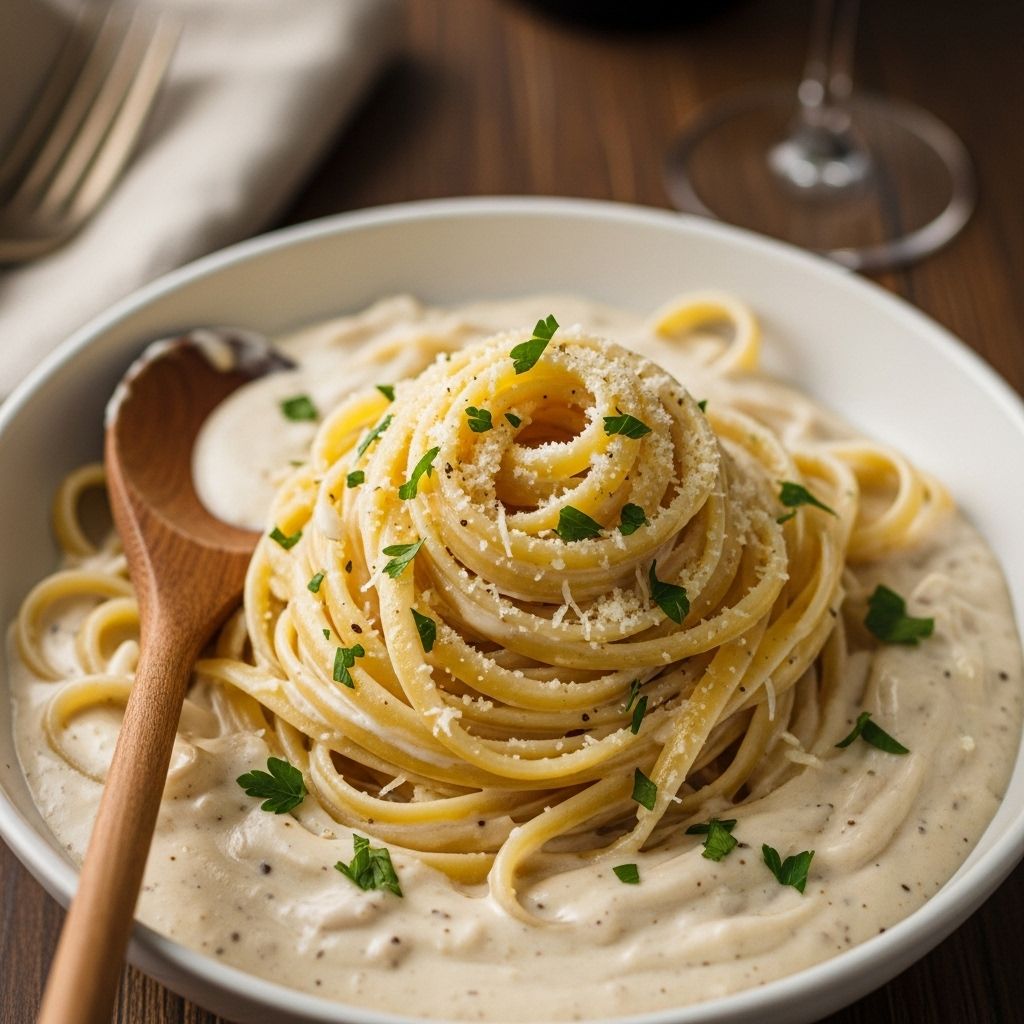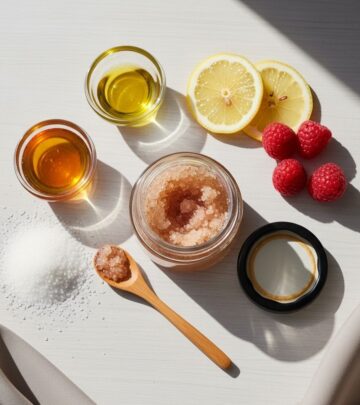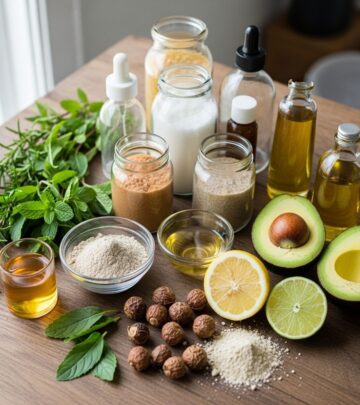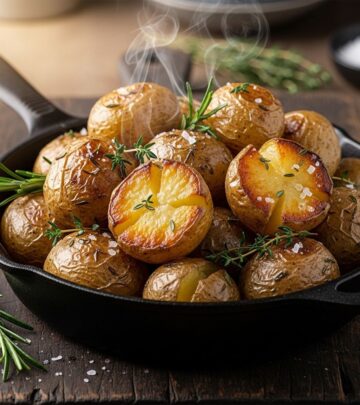Homemade Alfredo Sauce Recipe: Creamy, Quick & Easy Pasta Sauce
Whip up rich, velvety goodness with this simple recipe for your next pasta night!

Image: HearthJunction Design Team
Easy Homemade Alfredo Sauce Recipe: A Creamy Delight for Pasta Lovers
There’s something magical about a perfectly creamy, rich Alfredo sauce coating strands of pasta. While many home cooks might reach for the jarred version at the grocery store, making Alfredo sauce from scratch is surprisingly simple and infinitely more delicious. This homemade Alfredo sauce recipe uses basic ingredients you likely already have in your kitchen, and the result is a restaurant-quality sauce that will elevate any pasta dish to gourmet status.
Whether you’re preparing a romantic dinner, feeding a family, or simply treating yourself to a comforting meal, this easy homemade Alfredo sauce recipe is sure to impress. The beauty of this sauce lies in its simplicity—with just a handful of quality ingredients and about 15 minutes of your time, you can create a sauce that’s far superior to anything you’ll find pre-made on store shelves.
What Makes a Great Alfredo Sauce?
Traditional Alfredo sauce originated in Rome, Italy, where it was simply a mixture of butter and Parmesan cheese. The American version we know today has evolved to include cream and often garlic, resulting in a richer, creamier sauce. The key to an excellent Alfredo sauce lies in using fresh, high-quality ingredients and understanding how they work together to create that silky, luxurious texture.
A truly great Alfredo sauce should be velvety smooth, rich without being overly heavy, and have a balanced flavor where no single ingredient overpowers the others. The sauce should coat pasta perfectly, clinging to each strand rather than pooling at the bottom of your plate. Our easy homemade Alfredo sauce recipe achieves all of these qualities while being simple enough for even novice cooks to master.
Easy Homemade Alfredo Sauce Ingredients
One of the best things about making Alfredo sauce at home is that it requires just a few simple, staple ingredients. Here’s what you’ll need to create this creamy masterpiece:
- Unsalted Butter (3 tablespoons): Provides richness and a silky mouthfeel to the sauce. Using unsalted butter allows you to control the salt content of the final dish.
- Olive Oil (2 tablespoons): Works with the butter to create a smooth base for the sauce and adds a subtle flavor dimension.
- Heavy Cream (2 cups): The foundation of the sauce’s creamy texture. Don’t substitute with half-and-half or milk, as the sauce won’t thicken properly.
- Garlic (2 cloves, minced): Provides essential aromatic flavor that defines a good Alfredo sauce.
- White Pepper (¼ teaspoon): Adds a mild heat without the visual black specks of regular pepper, maintaining the sauce’s creamy white appearance.
- Freshly Grated Parmesan Cheese (½ cup): The heart and soul of Alfredo sauce, providing both flavor and helping to thicken the sauce. Always use freshly grated for the best melting properties.
- Shredded Mozzarella Cheese (¾ cup): Adds extra creaminess and a slight stretch to the sauce that beautifully coats pasta.
Kitchen Tools You’ll Need
Making Alfredo sauce doesn’t require any special equipment, just a few basic kitchen tools:
- Medium saucepan (preferably non-stick)
- Wooden spoon or whisk for stirring
- Measuring cups and spoons
- Cheese grater (if using block cheese)
- Garlic press (optional)
How to Make Alfredo Sauce From Scratch
Creating a silky-smooth Alfredo sauce is easier than you might think. Just follow these simple steps for sauce perfection:
Step 1: Prepare Your Base
Begin by heating the unsalted butter and olive oil in a medium saucepan over medium-low heat. Allow the butter to melt completely, but be careful not to let it brown. The combination of butter and oil creates a perfect base that’s less likely to separate than using butter alone.
Step 2: Add Cream and Seasonings
Once the butter has melted, gradually mix in the heavy cream, minced garlic, and white pepper. Stir continuously to ensure everything combines smoothly. Bring this mixture to a gentle simmer, stirring often to prevent scorching on the bottom of the pan. This process should take about 3 to 5 minutes.
Step 3: Incorporate the Parmesan
When the cream mixture is simmering, gradually stir in the freshly grated Parmesan cheese. Adding the cheese slowly while stirring helps prevent clumping and ensures a smooth sauce. Continue to simmer the sauce, stirring frequently, until it has thickened and becomes smooth. This typically takes about 8 to 10 minutes.
Step 4: Add the Mozzarella
Once your sauce has reached the desired thickness, add the shredded mozzarella cheese. Stir continuously until the mozzarella has completely melted and the sauce is smooth and velvety. The mozzarella adds an extra dimension of creaminess and a slight elasticity that helps the sauce cling beautifully to pasta.
Tips for Alfredo Sauce Success
Even with a simple recipe, a few professional tips can make the difference between a good sauce and a great one:
- Use room temperature cheese: Taking your cheese out of the refrigerator 20-30 minutes before cooking allows it to melt more smoothly.
- Grate your own cheese: Pre-shredded cheeses often contain anti-caking agents that can make your sauce grainy. For the smoothest results, grate your cheese fresh.
- Keep the heat low: High heat can cause dairy-based sauces to separate or curdle. Gentle heat is key to a smooth result.
- Stir constantly: Continuous stirring prevents the sauce from sticking to the bottom of the pan and helps incorporate the cheese evenly.
- Don’t boil: Once the cheese is added, make sure the sauce never comes to a boil, as this can cause separation.
Serving Suggestions
Alfredo sauce is incredibly versatile and can be used in numerous delicious ways:
- Classic Fettuccine Alfredo: Toss with fettuccine pasta for the traditional favorite.
- Protein Additions: Add grilled chicken, sautéed shrimp, or smoked salmon for a heartier meal.
- Vegetable Pairings: Mix in steamed broccoli, peas, asparagus, or sautéed mushrooms for added nutrition and flavor.
- Beyond Pasta: Use as a sauce for vegetable gratins, drizzled over baked potatoes, or as a creamy base for pizza.
- Dipping Sauce: Serve as a decadent dipping sauce for breadsticks or garlic bread.
How to Store and Freeze Easy Homemade Alfredo Sauce
Made too much sauce? No problem! Alfredo sauce stores well and can be easily reheated for future meals:
Refrigerating
Allow the sauce to cool completely, then transfer to an airtight container. Properly stored, homemade Alfredo sauce will last in the refrigerator for up to five days. When reheating, do so gently over low heat, stirring frequently to prevent separation. You may need to add a splash of cream to restore the original consistency.
Freezing
While cream-based sauces aren’t always ideal for freezing, this Alfredo sauce can be successfully frozen for up to three months. Pour cooled sauce into freezer-safe containers, leaving some room for expansion. Alternatively, pour into ice cube trays for convenient single-serving portions, then transfer the frozen cubes to a freezer bag.
Thawing and Reheating
For best results, thaw frozen Alfredo sauce overnight in the refrigerator. Reheat gently on the stovetop over low heat, stirring constantly to recombine any separated ingredients. Adding a tablespoon of fresh cream while reheating can help restore the sauce’s original creamy texture.
Variations on the Classic Recipe
While this basic Alfredo sauce recipe is delicious as is, you can customize it to create different flavor profiles:
- Herb-Infused: Add fresh herbs like basil, parsley, or thyme during the final minutes of cooking.
- Roasted Garlic: Substitute roasted garlic for the fresh minced garlic for a sweeter, more mellow flavor.
- Spicy Alfredo: Add a pinch of red pepper flakes or a dash of hot sauce for a kick.
- Truffle Alfredo: Drizzle in a small amount of truffle oil at the end for an elegant, earthy variation.
- Lightened-Up Version: Substitute part of the heavy cream with evaporated milk or half-and-half (though the sauce won’t be quite as rich).
Troubleshooting Your Alfredo Sauce
Even experienced cooks occasionally encounter issues with sauce-making. Here are solutions to common Alfredo sauce problems:
Sauce Is Too Thick
If your sauce becomes too thick, thin it with a small amount of warm milk or cream, adding just a tablespoon at a time until you reach the desired consistency.
Sauce Is Too Thin
Continue simmering the sauce for a few more minutes to reduce and thicken it. Alternatively, make a slurry with a teaspoon of cornstarch and a tablespoon of cold water, then stir this into the simmering sauce.
Sauce Is Grainy or Separated
This usually happens when the sauce is heated too quickly or at too high a temperature. Remove from heat and whisk in a tablespoon of cold cream. If that doesn’t work, try blending the sauce briefly with an immersion blender to recombine the ingredients.
Cheese Isn’t Melting Properly
Make sure you’re using freshly grated cheese (not pre-packaged) and that your sauce isn’t too hot when you add the cheese. Remove from heat and let cool slightly before adding more cheese.
Frequently Asked Questions (FAQs)
Q: Can I make Alfredo sauce ahead of time?
A: Yes, you can make Alfredo sauce up to 3 days in advance. Store it in an airtight container in the refrigerator and reheat gently on the stovetop, adding a splash of cream if needed to restore the consistency.
Q: Can I use milk instead of heavy cream?
A: While heavy cream produces the richest results, you can substitute half-and-half for a lighter version. Regular milk is not recommended as it won’t provide the same thickness and richness.
Q: Why is my Alfredo sauce separating?
A: Separation usually occurs from overheating or rapid temperature changes. Keep the heat low, avoid boiling, and stir constantly to prevent separation.
Q: Is Alfredo sauce gluten-free?
A: This homemade Alfredo sauce recipe is naturally gluten-free. Just be sure to pair it with gluten-free pasta if needed.
Q: Can I add wine to my Alfredo sauce?
A: A splash of dry white wine can add complexity to Alfredo sauce. Add it after the butter melts and let it reduce by half before adding the cream.
Q: How can I make a healthier Alfredo sauce?
A: For a lighter version, you can substitute part of the cream with evaporated milk, use light cream instead of heavy cream, and reduce the amount of butter. Note that the texture and richness will be different from the classic version.
With this easy homemade Alfredo sauce recipe in your culinary arsenal, you’ll never need to rely on store-bought versions again. The rich, creamy texture and deep flavor of freshly made Alfredo sauce will transform even the simplest pasta dish into something special. Whether you’re cooking for a special occasion or just craving a comforting bowl of pasta, this recipe delivers restaurant-quality results with minimal effort.
So gather your ingredients, set aside about 15 minutes, and prepare to create a sauce that will have everyone asking for seconds. Once you’ve mastered this basic recipe, feel free to experiment with the suggested variations to create your own signature Alfredo sauce that perfectly suits your taste preferences.
References
- https://www.allrecipes.com/recipe/19402/quick-and-easy-alfredo-sauce/
- https://www.allrecipes.com/recipe/22831/alfredo-sauce/
- https://www.allrecipes.com/recipe/277256/easy-homemade-alfredo-sauce/
- https://www.allrecipes.com/recipe/11945/easy-alfredo-sauce-i/
- https://www.allrecipes.com/recipe/23431/to-die-for-fettuccine-alfredo/
Read full bio of medha deb












